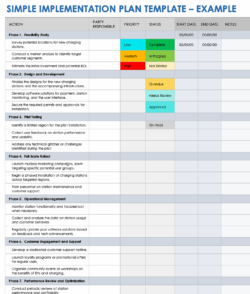Ever feel like your IT infrastructure is a sprawling jungle, with tangled vines of processes and systems reaching in every direction? You’re not alone! Many organizations struggle to keep track of their IT assets, processes, and configurations. That’s where ITIL, the Information Technology Infrastructure Library, comes in. And a key component of a successful ITIL implementation is, you guessed it, solid system documentation. But staring at a blank page can be daunting. Where do you even begin?
That’s where an itil system documentation template can be a lifesaver. Think of it as a pre-built map to navigate that IT jungle. It provides a structured framework to capture essential information about your systems, processes, and workflows. This not only helps you maintain control and visibility, but it also streamlines troubleshooting, improves incident management, and supports continuous service improvement.
In this article, we’ll delve into why system documentation is so vital in the ITIL framework, what elements to include in your template, and how to make it a living, breathing resource that benefits your entire IT organization. Get ready to tame that IT jungle and bring order to your digital domain!
Why System Documentation is Crucial for ITIL Success
At its core, ITIL is about providing value to the business through effective IT service management. And a cornerstone of effective service management is having a clear understanding of your IT landscape. Without proper documentation, you’re essentially flying blind. Imagine trying to fix a critical server outage with no documentation on its configuration, dependencies, or recent changes. The time wasted searching for information could lead to significant business disruption and financial losses.
System documentation acts as a single source of truth for your IT environment. It provides a centralized repository for all the critical information needed to manage and maintain your systems effectively. This includes details about hardware, software, network configurations, processes, procedures, and even contact information for key personnel. When everything is documented in one place, it’s easier to find the information you need, when you need it.
Think about onboarding new team members. With comprehensive documentation, they can quickly get up to speed on your IT systems and processes. They can understand the relationships between different components, learn how to troubleshoot common issues, and contribute effectively to the team much faster. This reduces the learning curve and minimizes the risk of errors caused by lack of knowledge.
Furthermore, proper documentation is essential for compliance and auditing. Many industries are subject to regulations that require organizations to maintain detailed records of their IT systems. Having an itil system documentation template in place helps you ensure that you’re meeting these requirements and can easily provide evidence of your compliance during audits.
In essence, well-maintained documentation improves incident resolution times, reduces errors, facilitates knowledge sharing, ensures compliance, and ultimately leads to better IT service delivery. It’s an investment that pays off handsomely in the long run, contributing to the overall success of your IT organization and the business as a whole.
Key Elements of an Effective ITIL System Documentation Template
Creating a good ITIL documentation template means ensuring it covers all the necessary bases. You want to create a living document. Not something that gets printed out once and then gathers dust on a shelf.
Firstly, you need to capture basic system information. This includes the system name, its purpose, the owner or responsible party, the physical location, and the operating system. Next, you should note the hardware specifications such as the processor type, memory, storage capacity, and network interfaces. And of course, the software details. You should include the installed software, versions, license information, and any dependencies.
Secondly, your documentation should cover the network configuration. This includes the IP address, subnet mask, gateway, DNS servers, and any related network devices. Then, you need to document security settings, such as firewall rules, access control lists, and any security software installed. The documentation should also include details on backup and recovery procedures, including backup schedules, retention policies, and recovery steps.
Thirdly, create sections for documenting procedures. Describe the standard operating procedures for tasks like starting, stopping, and troubleshooting the system. Also include details about incident management. You need to document the process for reporting and resolving incidents related to the system. A good template should include a version history to track changes made to the document over time. This helps you maintain an audit trail and understand how the system has evolved.
By incorporating these key elements, you can create an ITIL system documentation template that is comprehensive, user-friendly, and ensures that your team has the information they need to manage and maintain your IT systems effectively. Remember to keep the template adaptable, so it can evolve as your systems change and your business needs grow.
Finally, define a regular review cycle. Documentation isn’t a “one and done” task. It must be continuously updated, audited, and improved. Schedule periodic reviews to keep your documentation fresh and relevant.
Ultimately, building a great system documentation template means building a tool that enables your IT staff. It saves them time, helps avoid errors, and makes your entire IT infrastructure much easier to manage.


